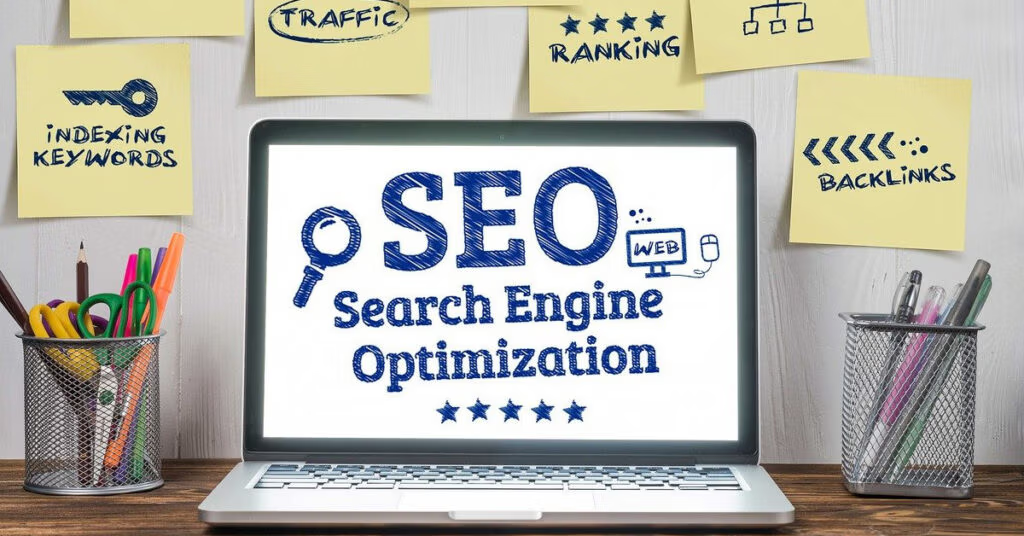Swotting at Ackadia
I’m not presently running this (or any other site) as a business, but I’m thinking about it, again. Or at least going through the motions, again. Still, I was reading an article on how to Grow Your Business with a SWOT Analysis and it got me thinking.
As a side note, I’d either not heard of or not paid attention to this site before, so I’ll give them a plug for being useful:
AllBusiness.com is one of the world’s largest online resources for small businesses, providing essential tools and resources to start, grow, and manage your business.
Older readers might smile, though, as swot has or had a different meaning when I was in school. As a verb, it meant hitting the books and revising hard for exams. The noun form is more derogatory and disapproving, suggesting you had no life outside of extreme studying. Fifty years on, the richest people on the planet are all (computer) nerds.
Strengths
The polling showed that for most small businesses their strength was that they “are willing to invest in growth”. They mention advertising and equipment, but I’d include training in that.
As for my own strengths, I’m really good at what I do and if it’s something I haven’t done or tried before, I’ll get good, fast. I’m a quick learner like that. But for the purpose of self-promotion, I’m analytical in nature and tend towards perfectionism. (That probably ticks a weakness too, but overall, for a programmer, it’s positive)
Strengths versus the competition? Well, about twenty years of experience is a plus, but beyond that, I’m not motivated by profit or constrained by massive overheads and I have a lot of free time, so I can make deals and offers that others simply have to walk away from. Like taking on projects for the bare cost (essentially free) if I think they are worthy.
Weaknesses
Interestingly, and what sparked this post, what they considered a weakness for everyone else is one of my greatest strengths and opportunities. Funny how things work out, sometimes.
No, my weakness, like all businesses with a critical, key or unreplaceable staff member, is there’s just me. Also, I do have long-standing health problems. As well as a possible concern for customers, this means I don’t get out and about much, or at all actually, as I’m housebound. But everything I do involves sitting and typing, so it’s not an unsurpassable issue.
As for everyone else’s weakness:
This is a pretty big weakness: Many small business owners are behind the curve when it comes to mobile. More than four in 10 (41 per cent) of respondents admit their business website isn’t yet optimized for all mobile devices. The study cites data that 88 per cent of consumers who search for a local business on a mobile device will call or visit that business within 24 hours—underscoring the power of mobile-friendly websites to drive customers to your door.
Rieva Lesonsky in the guest post for AllBusiness
It could be argued that my style is bland and that is a weakness, that people prefer vibrant sites. I prefer minimalist to bland and on that note, have you never looked at Google? Not big on sliders and feeds and heavy imagery, are they?
Also while considered a failing, and this is important, boring is more accessible.
It is actually a legal requirement in the UK and other countries to consider less abled people when designing websites.
Contrast and larger fonts for sight-impaired visitors.
Consideration for physical disabilities (a broken arm is given as an example of this)
Colour contrast for colour-blind visitors. (In the UK that’s about 2.5 million men!)
Consideration for the autistic spectrum is another.
I’m on the spectrum myself, well educated, but even at degree level, you run into things that make no sense to you and being told “it’s obvious” when it’s not is a tad annoying (especially given I used to write puzzles for Mensa)! I actually raised this point at the time. One lecturer, who had an autistic son and understood what I meant, explained it to me by turning the sentence around. The other, less tolerant lecturer was reprimanded after I put in an official complaint.
Another example, which Michelle at Codefetti kindly helped me with, is just so obvious – unless you have to be on the spectrum! I wanted to list the latest posts on a page but not the home, and without coding new functions or resorting to block builders. For a given category, it’s nothing, but latest posts evaded me, so I gave up looking for an answer until it began to drive me to frustration.
I am highly intelligent, but, as I say, am also high-functioning autistic, so when, for setting page archives, WordPress say: [ Settings > Reading Settings > “Your homepage displays” ]…
Well, I (I imagine ‘we’) take this literally: It states, “Homepage displays…” and offers EITHER this OR that; that’s the end of it. It didn’t occur to me that a drop-down option specifically for the home page would offer ‘not the home page‘. It says, “this is for the home page”, it made and makes no sense to me to bury a “put it anywhere else you like” under a drop-down menu under such a heading.
Just a grumpy reminder for web designers, hubristic academics and marketing executives that just because something is “obvious” to the neurotypical masses does NOT make it obvious to everyone!
W3School has a good tutorial and guide to accessibility and diversity if you are interested.
Codefetti also has a couple of excellent posts on accessibility and ADA compliance, e.g.:
:How to improve web accessibility for low-vision users
Opportunities
I’ve been interested in and focused on accessibility and SEO for the best part of twenty years. My main site is as old as Google and was active before them. So, long before responsive sites became a thing.
The first proper smartphones came out in 2007, but I’d argue more for 2012 myself in terms of functions. By that time I’d already been working for years towards such targets. The design statement for my main site will give you a bigger picture.
I suppose these may be considered weaknesses too, depending on your mindset, but I’m pedantic, cynical, snarky even, jaded certainly, and clinically obsessive about perfectionism in some things. So when I look at the stuff other web designers put out – really look – and the prices they charge, it offends me.
Some even want a premium for HTTPS, even though it’s free as standard with all hosts now and has been for a few years! If your web designer wants £100 +vat to “sort out your padlock”, walk away, they are cowboys!
I know of one company that disabled automatic security updates, and used addons to stop clients from manually updating. Then charged them a quarterly fee to apply them! As well as being exploitive, and unprofessional, it meant the websites they produced were all vulnerable to attack.
Some of the stuff I see is either lazy or sloppy, such as a big agency whose portfolio proudly displayed their work for a major Car Renal Company. ![]() I wasn’t aware cars had kidneys!
I wasn’t aware cars had kidneys!
Some of it – the same company – is trying to pull a fast one on customers, talking up their game with corporate spiel while offering vanilla products at professional rates. If you are paying out £5,000 for a site, you want a £5,000 site, not something most developers could churn out for a tenth of the price. When I reviewed agencies in the area, while not perfect, some I’d have no problems recommending people to them. The one hinted at above, I labelled them as arseholes. (I’ll hold my hands up, I have an almost pathological dislike for corporate culture and ethos; it is inherently toxic).
In web design a great deal is down to, I suppose, market trends. There’s a move embraced by WordPress and others towards drag-and-drop web design. I was blazing when without so much as an “if you please” WordPress replaced the classic interface with their vision of the future: Gutenberg blocks. The outrage by developers at the time, from all around the world, forced them to put the classic editor back (as a plugin that disables Gutenberg).
So block and page builders, like Elementor, Beaver, Nimble and the lightweight Spectra.
Some of them can produce fantastic effects quickly and time is money so, naturally, many web designers embrace it, especially if they are visually orientated. Other, older developers, like me, are less enthusiastic as these fancy tools can be fickle, and cumbersome to use and they always add bloated code to sites. As a hand-coder, if code was food, that junk looks like someone vomited spaghetti over your eggs benedict! You are picking bits out with a horrified look on your face and positive you’d do better going back in the kitchen and starting over. And in this scenario, you often are! Mostly it’s pure garbage.
I’ve talked about bloated code before and will cover it again sometime, but it impacts page load times, which drives visitors away and lowers your page rank with search engines. What’s the use of a pretty site if it takes so long to load that most of your visitors abandon it?
2 seconds is Google’s recommended page speed load time on a mobile device.
8 seconds in the average time
10 seconds or longer and the majority are walking away and looking at your competitors
I tested one of my competitors as it seemed to take a long time to load, even on a desktop. It look over 16 seconds on mobile and Google gave it an accordingly abysmal score. Google did not score it for desktop speed as it crashed! I looked at their portfolio page and after about a minute of waiting for it to load, gave up. People will start to give up after just 2 or 3 seconds.
I can do a better job in a fraction of the time, for a fraction of the cost.
Conversely, some may see that as a weakness! “Why is he so cheap, he must be rubbish”. Well, my needs are modest, I don’t need to make a lot of money, or even make a profit, though break-even would be nice. Other people are focused on Rolex, BWM’s, on things. Each to their own.
My wife and a friend put it well, in different ways. My wife said, “I need to sleep, talk to me about computers!” My friend said, “If you talk code to me again I’m going to brain you with this spanner. Just do what you do and if you need a fabricator, I won’t talk to you about the correct use of solder. Agreed?”
The fact is, for most people and especially most older people, it’s all dark arts and they don’t want to know, thank you. Computer nerds bore others computer nerds if they are in different fields, we get it. However, for some, that’s an advantage, something to exploit. To overcharge for. Call it what it is, greed. With all that is involved, depending on the case, £300 to £1,000 is a reasonable rate. Charging over a hundred quid for a 30-second fix – as some do – is another matter.
For further reading, there’s a post by WPBeginner on the importance of page speed. It is interesting to note how they acknowledge that “most of that is technical jargon which is hard for beginners to understand”.
Funny but true story. Many years ago, in computers, I got into a price war with a competitor. It was petty, he was petty to be precise. I need more network cards in a hurry and sent someone to buy half a dozen. The person I sent, being helpful, said, “It’s for Nordic, is there a trade discount?” The guy took all his cards off the shelf and said, “Sorry, sold out” and apparently smirked.
I responded by selling desktop PCs at cost price and advertising his builds (3x the price) against mine. Apparently, that’s a big no-no and trading standards came around to read me the riot act, saying the law states you can only compare like for like. I smiled, got out the trade prices lists (we all used the same suppliers) and pointed out the components, and their actual prices. Turns out the guy had just sold the head of trading standards a £60 Intel P90 chip for something like £460, saying it was “the best he could do.” Trading standards turned around and marched back to have words with the guy. I got a contract to sell PCs to the council.
Threats
For small businesses, some of the threats are relatable, others not, so I guess it was an American poll. Worrying about healthcare packages for staff isn’t an issue until you hit the corporate ladder here, i.e. when BUPA starts to become part of the package to lure the right candidates.
The other big concern mentioned related to the need for loans and funding (65%), offering competitive prices against big business (37%) and so on down the list of wages etc., with an American focus.
Basically, I have none of the threats most businesses have. My only threat is my own health, and that’s well-managed.
SWOTTED
Overall, albeit in my own biased opinion, I think I came out OK in the SWOT analysis.
If you disagree, feel free to tell me 🙂
Feature image from Pixabay, by Gerd Altmann



